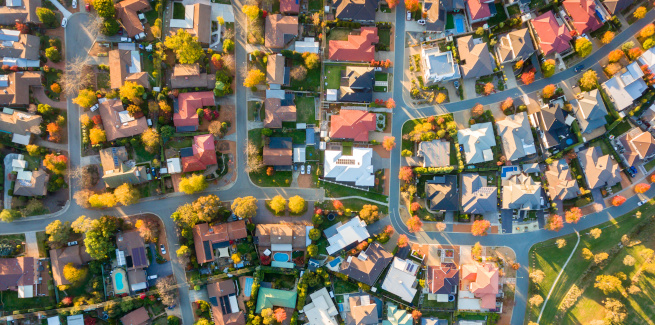A report from SQM Research has forecast property prices will rapidly slow from the current annual 20.6 per cent growth for the 12 months to November (based on CoreLogic data).
If the cash rate remains unchanged, quantitative easing is called back, inflation rises to a range between 3 to 6 per cent and APRA enacts further action by June next year, SQM expects property prices across the capital cities will grow by at most, an average of 5 per cent.
If the cash rate rises to 0.25 per cent or to 0.5 per cent in the second half of the year, a more moderate price movement is expected, with SQM projecting a range of -1 per cent to 4 per cent.
Similarly, an earlier cash rate rise would result in a greater dampening effect, with prices expected to move between -4 per cent to 1 per cent.
The forecast somewhat echoes what three of the big four banks have projected – that prices will move negatively in 2023.
ANZ has tipped there will be a national price fall of 4 per cent in 2023, to follow a 6 per cent rise in 2022 and a 21 per cent surge in 2021.
CBA modelling has pointed to a 10 per cent fall in 2023, to coincide with a cash rate rise to 1.25 per cent – after a 7 per cent rise in 2022 and 22 per cent growth in 2021.
Meanwhile, Westpac released a forecast tipping price growth will moderate from 22 per cent in 2021, to 8 per cent in 2022, before a 5 per cent correction in 2023.
However, SQM believes there will be no change to the cash rate until at least late 2022.
But if APRA takes no further action in the lending market, prices are expected to have a greater rise, between 3 to 8 per cent.
SQM believes the price falls will be led by Sydney and Melbourne houses, reporting “significant overvaluation” and that the cities are most sensitive to even minor home loan intervention from APRA.
If the regulator takes further action, the two cities are expected to see house price falls from mid-2022, after they were the most affected by APRA’s intervention in 2017.
But unit price growth in both cities is expected to outperform houses, with a projected rise in net migration from interstate and overseas as the border reopens.
Brisbane is tipped to record the largest dwelling price rise over 2022, with prices predicted to rise between 8 to 14 per cent.
Better housing affordability in the Sunshine State compared to Sydney and Melbourne is expected to continue pulling strong interstate migration.
However, dwelling prices in regional Australia are also expected to correct, particularly for inland communities, as people return to the capital cities.
SQM Research managing director Louis Christopher commented that as 2021 draws to a close, the national housing market has started to show signs of a peak.
“Auction clearance rates have fallen from their highs amid record listings. However, we may also be recording some seasonality and pent-up selling after vendors held off listings during the lockdown,” he said.
“Nevertheless, we expect the market to peak in 2022, with further expected intervention by APRA, which could come as early as next month, halting the price momentum.”
He added that if the housing market does not slow down by mid-2022, APRA will likely keep implementing lending curbs.
“We cannot afford another year of 20 per cent plus gains across the national housing market,” Mr Christopher said.
“And so, to ensure a soft landing for the market, it is best we see additional intervention sooner rather than later to reign in property valuations.”
 ;
;
